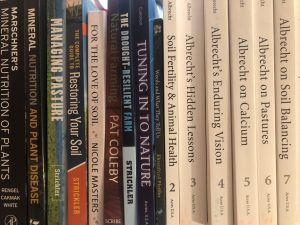Why are you planting trees on your farm? It might seem like an obvious question to you, but answering this question well is crucial to establishing a sustainable agroforestry planting on your property. This article will cover some of the reasons why you might plant trees and how that will affect your planning and ongoing management of those trees.
Why plant a tree? If you ask a conservationist, farmer or forester this question, you would likely get very different answers. You might want to plant trees for the koalas, or some other vulnerable species in your area. You might want to plant trees to shade, shelter or feed your livestock. And what if you want to manage your trees for sawlogs or firewood? You might just want to plant them because they make you feel good! While we are on our tree planting journey, it’s important to ask these questions, because the answers will determine our management regimes.
Planting for Conservation
What to plant:
A key question is to ask what you are seeking to conserve? If it is native flora and fauna, a good step is to look up the local Ecological Vegetation Class and discover what is native in your area. If there are vulnerable or endangered species that you are trying to protect, you can look up their habitat to help you plan your plantings.
Where to plant:
Do you have any existing wildlife corridors on your property or on neighbouring properties? If so, you might want to design your planting to connect these corridors and create bio links across the landscape. If you have similarly minded neighbours you may want to collaborate with them to design something bigger!
How to plant:
When planting for conservation, you could do direct seeding. This is an approach where the site is disturbed in preparation and the seed is broadcast throughout the area. If you get a good strike, you will have a very high density of trees and shrubs growing in the area. If you were growing for timber, this can be more difficult to manage, but if you are growing for habitat, this can be a good approach.
How to manage:
Management is a difficult in a conservation context given that there is often no cashflow generated from the plot to fund the management over time. In some contexts, you will not want to manage the plot and allow it to self-organise over time. But if you would like to keep the area clean of undesirable plants, you will need to apply chemicals or introduce animals to keep on top of things.
Planting for Shade and Shelter, plus agricultural productivity
What to plant:
A key consideration here is the use of both evergreen and deciduous species. Evergreens will provide some good winter shelter but may shade pasture which needs the winter sunshine. Deciduous trees will provide a better shade in the summer months while still allowing the sun through in the winter. If you want your shelterbelt to grow timber or provide habitat, you may want to select species that can serve a dual purpose.
Where to plant:
Determining where your prevailing winds come from will help you decide where to plant. Some areas of your place might be naturally sheltered through topography, while others may be tunnelling wind through your entire property. Addressing these areas might impact the whole property, giving you a greater bang for buck.
How to plant:
The key for wind shelter is to have a grade in your belt to allow the wind to move over the top of your trees. This means having shorter trees and shrubs on the outside of the row, and taller trees in the middle. For tree spacing and ongoing management, it will depend on your other goals for the belt. It is possible to manage for forestry, biodiversity or a mix of the two.
Planting for Forestry
What to plant:
It’s worth visiting some tree growers in your area to determine which species grow well and which species the local mills prefer. Alternatively, if you have the vision of harvesting and milling the timber yourself, you could ask local small scale sawmillers what they prefer and what markets they see in the future.
Where to plant:
It is important to consider the species that you are planting and where they grow best. Some trees prefer the ridges and others prefer the floodplains, so you can design your planting around those preferences. If you are planting trees for forestry on a working farm, you may want to plant your forestry trees on areas that are low in agricultural productivity like steep slopes and boggy areas. It’s also important to consider access for both management and harvesting when choosing where to plant.
How to plant:
There are many approaches to spacing in forestry. In general, tighter spacing means less branching of trees and therefore less pruning. Wider spacing means less thinning and more pruning. The key for planting in forestry is the preparation to ensure nothing is competing with the trees in the early years. This can be done through cultivation or mulching, but more commonly with herbicide. The trees will need to be protected against any relevant predators with a tree guard or fencing, and a management plan put into place to manage the trees for decent saw logs.
Successful tree planting on your farm involves careful consideration of species and site selection, planting, and management. By focusing on these key areas, you can give your trees the best chance to not only thrive but also contribute to the overall conservation and sustainability of your land. With thoughtful planning and diligent care, tree planting can become a valuable and lasting investment in the health and productivity of your farm.
















